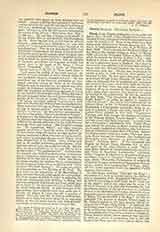

Floyd, JOHN, English missionary, wrote under the names, FLUD, DANIEL A JESU, HERMANNUS LCEMELIUS, GEORGE WHITE, ANNOSUS FIDELIS VERIMENTANUS, and under the initials J. R. Some of his works have been erroneously attributed to Robert Jennison, S.J. He was b. in Cambridgeshire in 1572; d. at St-Omer, September 16, 1649. He was educated at the Jesuit College at Eu, then at the English College at Reims (March 17, 1588), and finally the English College in Rome (1590), where he entered the Society of Jesus, November 1, 1592. Nothing is known about his ordination, but in 1606 he was a missionary priest in England. On April 6 in that year he was arrested at Worcester while attempting to visit Ven. Edward Oldcorne who was to suffer martyrdom next day. Having been imprisoned for twelve months he, with forty-six other priests, was banished for life. He then spent four years teaching at St-Omer, though Foley (Records, IV, 238) is mistaken in supposing that he published any controversial works at that time. On July 31, 1609, he was professed of the four vows, and soon after returned to England, where he labored on the mission for many years, being often captured, but effecting his escape by buying off the pursuivants. In 1612 he published his first work, “The Overthrow of the Protestant Pulpit Babels”, in which he replied to Crashaw’s “Jesuit’s Gospel”. He was in turn answered by Sir Edward Hoby, in his “A Counter-snarl for Ishmael Rabshakeh a Cycropedian Lycaonite, being an answer to a Roman Catholic who writes himself J. R.” Father Floyd retorted in 1613 with “Purgatorie’s Triumph over Hell, maugre the barking of Cerberus in Syr Edward Hobyes Counter Snarle”. This controversy closed with Hoby’s rejoinder “A Curry-comb for a Cox-combe”, published in 1615. Father Floyd next turned his attention to Marc’ Antonio de Dominis, formerly Archbishop of Spalatro, who had apostatized and become Protestant dean of Windsor. Against him Father Floyd wrote four works: “Synopsis Apostasii Marci Antonii de Dominis, olim Archiepiscopi Spalatensis, nunc Apostat, ex ipsiusmet libro delineata” (Antwerp, 1617). It was translated into English by Father Henry Hawkins, S.J., in 1617, and again by Dr. John Fletcher in 1828. “Hypo-crisis Marci Antonii de Dominis detecta seu censura in ejus libros de Republics Ecclesiastics” (Antwerp, 1620); “Censura X Librorum de Republics Ecclesiastics Marci Antonii de Dominis” (Antwerp, 1620; Cologne, 1621); “Monarchic Ecclesiasticae ex scriptis M. Antonii de Dominis Archiepiscopi Spalatensis Demonstratio, duobus libris comprehensa” (Cologne, 1622). All four works appeared under the signature Fidelis Annosus Verimentanus.
In 1620 Floyd published “God and the King”, a translation of a work on loyalty; and in the following year a translation of St. Augustine’s “Mtions’ In 1623 he “l `living ft Fleet Lane (Gee’s ‘Foot out of the Snare”) and in the same year he wrote “A Word of Comfort: or a discourse concerning the late lamentable accident of the fall of a room at a Catholic Sermon in the Blackfriars at London, wherewith about four-score persons were oppressed”; also a translation of Molina `On the Sacrifice of the Mass“. In 1625 he published “An Answer to Francis White’s reply to Mr. Fisher’s answer to the Nine Articles offered by King James to Father John Fisher”. In 1629 and the succeeding years Father Floyd played a leading part in the controversy between seculars and Jesuits as to the desirability of having a bishop resident in England. Bishop Richard Smith, whose presence was regarded by some as a source of persecution, had in fact left England for Paris and was never able to return but the situation gave rise to acrimonious discussion. Father Floyd’s works were “An Apology of the Holy Sea Apostolick’s Proceedings for the Government of the Catholicks of England during the time of persecution” (Rouen, 1630; enlarged Lat. ed., Cologne, 1631); and “Hermanni Lcemelii Antverpiensis Spongia qua diluuntur Calumniae nomine facultatis Parisiensis impositie libro qui inscribitur Apologia”, etc. (St-Omer, 1631). Both these works were condemned by the Sorbonne, and in 1633 Urban VIII stopped the controversy and suppressed all writings upon the subject. His other works are: A Paire of Spectacles for Sir Humphrey Linde to see his way withall” (1631); “The Church Conquerant over Human Wit” (1638); “The Totall Summ” (1638); “The Imposture of Puri-tan Piety” (1638). He left two unpublished works, “Vita Brunehildis Francorum Regime” and a “Treatise on Holy Pictures”. Father Floyd spent the last years of his life teaching philosophy and theology at St. Omer’s.
EDWIN BURTON

